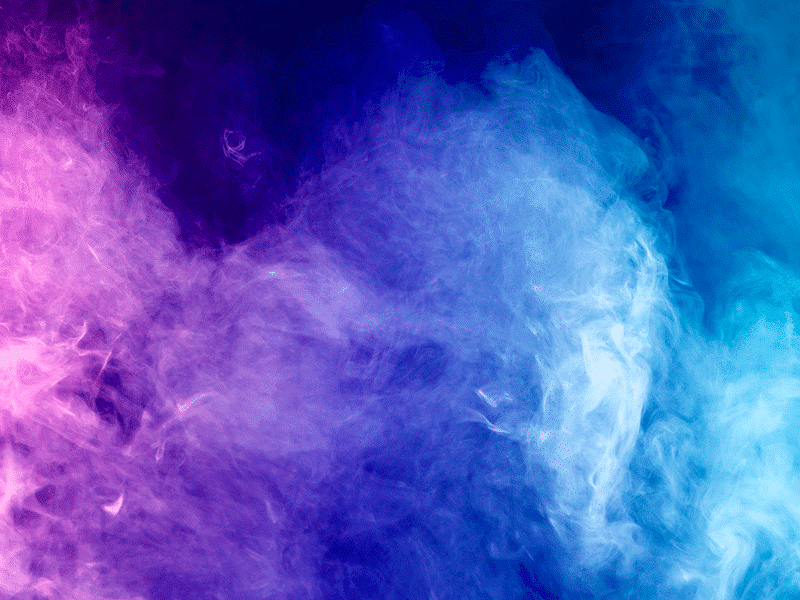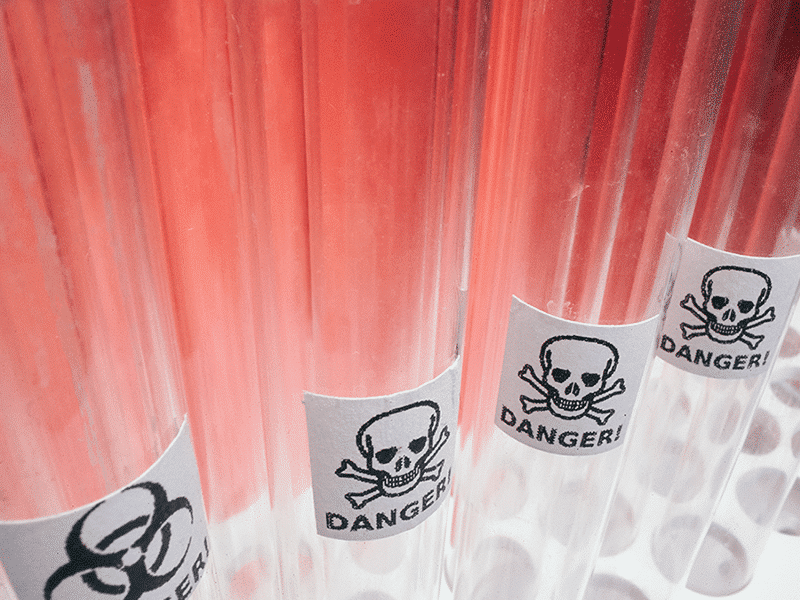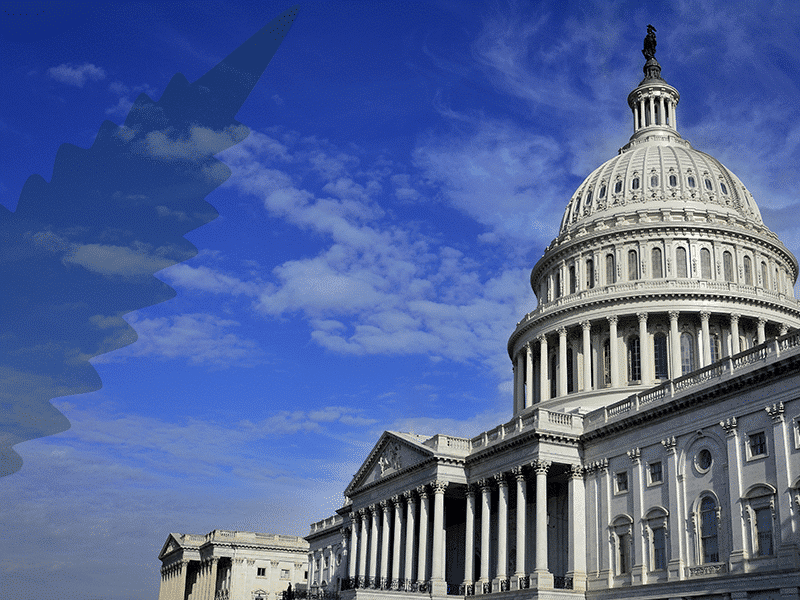The legalization of hemp-derived cannabinoids by the 2018 Farm Bill has created a yawning regulatory gap that is being avidly exploited by purveyors of sketchy vape products and high-potency edibles.
That’s the contention of a “white paper” report recently issued by the California Cannabis Industry Association (CCIA), a leading cannabis industry trade organization, which warned that the poorly written law inadvertently opened a “Pandora’s box” of unregulated intoxicating compounds that threaten public health. At issue are psychoactive cannabinoids other than cannabis-derived Delta-9 THC.
It was legalizing cannabidiol (CBD), a non-intoxicating compound with many salubrious properties, that lawmakers had in mind when they crafted the Farm Bill. But other intoxicating cannabinoids ostensibly derived from hemp — including Delta-8 THC and several potent synthetic THC analogs that don’t exist in nature — are being openly sold coast to coast without regulatory oversight, according to the white paper, which was written by CCIA vice president Tiffany Devitt.
Entitled Pandora’s Box: The Dangers of a National, Unregulated, Hemp-Derived Intoxicating Cannabinoid Market, it states: “Rife with contaminants and chemical byproducts, many of these so-called hemp THC and THC-like products are sold online and in convenience stores, gas stations, and smoke shops without age-gates, testing standards, packaging and labeling requirements, marketing limitations, or even a proper understanding of their potential effects on consumers. It’s a public health disaster.”
Did the Ninth Circuit Get It Wrong — Or Did Congress?
Devitt warns that the loopholes in the 2018 Farm Bill were legitimized by a recent ruling of the US Ninth Circuit Court of Appeals in San Francisco, which has “unleashed a Wild West of intoxicants.”
On May 19, 2022, a three-judge panel of the Ninth Circuit rejected arguments that Delta-8 products that are chemically synthesized from hemp-derived CBD fall outside the scope of the Farm Bill. In AK Futures LLC v. Boyd St. Distro, LLC, the panel upheld a Southern California district court’s grant of a preliminary injunction in favor of AK Futures, a producer of vaping products, in a trademark infringement action against rival Boyd Street Distro. The Ninth Circuit rejected Boyd’s contention that AK Futures could not hold a valid trademark for its products because federal law forbids possession and sale of Delta-8 THC.
Stated the decision: “Regardless of the wisdom of legalizing delta-8 THC products, this Court will not substitute its own policy judgment for that of Congress. If Boyd Street is correct, and Congress inadvertently created a loophole legalizing vaping products containing delta-8 THC, then it is for Congress to fix its mistake.”
The decision added: “[T]he source of the product — not the method of manufacture — is the dispositive factor for ascertaining whether a product is synthetic.”
The Ninth Circuit also found that “the only statutory metric for distinguishing controlled marijuana from legal hemp is the delta-9 THC concentration level.” That’s a reference to the 0.3% Delta-9 THC standard established as a maximum for legal hemp under the Farm Bill.
In her white paper, Devitt suggests that the Ninth Circuit erred, stating that the ruling is “at odds with other federal statutes such as the Federal Analogue Act, which explicitly prohibits THC analogs. Approval of novel cannabinoids … rightfully falls under the purview of the US Food and Drug Administration.”
Devitt agrees with the Ninth Circuit panel that further Congressional action is mandated. She writes: “All plants grown for cannabinoid content should be subject to a similar set of regulations rather than an arbitrary, unworkable THC threshold. Absent a single federally regulated cannabinoid market that oversees both hemp and cannabis, the 2018 Farm Bill urgently needs to be amended to close the loophole allowing the unregulated sale of concentrated, intoxicating, and/or synthesized cannabinoids.”
Devitt adds: “The ultimate solution is a single, federally regulatory framework that oversees both hemp- and cannabis-derived cannabinoid products for human consumption.”
Safety Concerns
Several peer-reviewed studies and cannabis industry scientists lend credence to the concerns expressed in the CCIA white paper. A few examples:
- An October 2022 report by University of Missouri researchers found “several impurities in concentrations far beyond what is declared on certificates of analysis” for ten popular Delta-8 THC products.
- Also in October 2022, the journal Cannabis & Cannabinoid Research published a report entitled “The Dark Side of Cannabidiol,” which saw a link between the free-for-all atmosphere and cases of E-cigarette or Vaping Use-Associated Lung Injury (EVALI). It concluded: “Quality control is totally inadequate in the newly emerging Δ8–THC industry. American consumers are ingesting products that are mislabeled with many compounds that have never received any toxicological testing. EVALI cases continue to be reported with a fatality rate approaching 2% (in California).”
- A recent study published by PLoS One, entitled “The inverse association of state cannabis vaping prevalence with the e-cigarette or vaping product-use associated lung injury,” found that the vaping crisis was worse in states without legal cannabis use. This speaks to the fact that safety issues are worse where legal cannabis isn’t available and intoxicating hemp products are prevalent.
- And a January 2022 study in Chemical Research in Toxicology, published by the American Chemical Society, was entitled “Novel Δ8-Tetrahydrocannabinol Vaporizers Contain Unlabeled Adulterants, Unintended Byproducts of Chemical Synthesis, and Heavy Metals.” The title speaks for itself.
“I continue to be disappointed and dismayed by the lack of concern for the distribution of contaminated synthetic cannabis derivatives into the consumer market,” Christopher Hudalla, founder of Proverde Labs, told The Cannabis Scientist. “After testing thousands of products based on synthetic isomerizartion processes, 100 percent of the samples we have tested contained significant amounts of residual synthetic reagents and/or synthetic byproducts, most of which do not exist in nature and, as such, have no demonstrated safety profile.”
To make matters worse, according to Hudalla: “Most analytical laboratories that are providing testing for these products are ignoring the presence of these unknown compounds and do not report their presence on the resulting Certificates of Analysis… Instead these contaminated products continue to be distributed without oversight, putting consumer’s health and safety at risk … all for the sake of maximizing profits. I cannot imagine another legitimate industry that would be permitted to operate with such irresponsibility.”
How Did We Get into This Mess?
Cannabis prohibition is codified by the 1970 Controlled Substances Act (CSA), a legislative travesty that defines “marihuana” as “all parts of the plant Cannabis sativa L” as well as “the resin extracted from any part of such plant; and every compound, manufacture, salt, derivative, mixture, or preparation of such plant, its seeds or resin.” Excluded from the definition are mature stalks, fiber, sterilized seeds, and products made from the non-resinous parts of the plant.
THC and CBD are both sourced from cannabis resin; hence both compounds are deemed illegal by the CSA. By redefining “marihuana” as cannabis with more than 0.3 percent THC in any part of the plant, the Farm Bill legalized the cultivation of hemp for industrial purposes, as well as for CBD extraction, provided that the hemp crop does not exceed the 0.3 percent THC threshold (as is often the case).
But here’s the problem: the language in the 2018 Farm Bill applies the 0.3% standard to “all derivatives, extracts, cannabinoids, isomers, acids, salts, and salts of isomers, whether growing or not [emphasis added].”
Application of this standard to finished products provides both a loophole and strategy for packing an ingestible “hemp” product with a whopping dose of Delta-9 THC. “If one measures THC on a percentage basis, one need only make a larger or heavier product to come up with an intoxicating dose,” the CCIA white paper notes.
And we aren’t just talking about Delta-9 THC. Manufacturers “are producing compounds not native to the plant – or not present in meaningful quantities – by extracting and concentrating CBD and then modifying it to produce new synthetic and semi-synthetic cannabinoids. Typically, this process involves the use of toxic and corrosive solvents and heavy metal catalysts, remnants of which can sometimes be found in the final product. The result is novel compounds that are often many times stronger than traditional THC.”
The white paper names THC-P, THCjd, THC-H, THC-O, HHC, and Delta-10 THC, as well as Delta-8, as among the sketchy compounds that are proliferating in the unregulated “hemp” market. And many of these compounds are found in products tailored to appeal to underage consumers.
Not for Kids, Thank You
Such products fall between two chairs, so to speak — neither non-psychoactive “hemp” nor regulated “cannabis.” This allows such abuses as mislabeling — and “brazen marketing to children.”
Regulated “cannabis” companies in California and elsewhere are subject to THC potency caps, rigorous testing standards, stringent labeling requirements, child-resistant packaging, advertising restrictions — and age limits for sales. Marketing products in a way intended to appeal to children is strictly verboten. In contrast, “hemp” products need not abide by any such restrictions.
This issue was thrown into a harsh light by the case of Virginia mother Dorothy Annette Clements, who faces felony murder and child neglect charges after her four-year-old died — apparently from ingesting a large quantity of Delta-8 THC infused gummies. According to the Associated Press (Oct. 24, 2022), medical authorities in Spotsylvania County found that the cause of death was “delta-8-tetrahydrocannabinol toxicity” – or more likely from lethal contaminants in the gummies.
Whatever the facts of this grim case may be, the danger is clearly real. Nor is this an isolated incident. Minnesota regulators recently filed a lawsuit against three companies – Northland Vapor Moorhead, LLC, Northland Vapor Bemidji, LLC, and Wonky Confections, LLC – involved in the manufacture and sale of hemp THC infused edibles, claiming that the products sickened five teenagers in Iowa.
In November 2022, Cannabis & Cannabinoid Research published a study, “Delta-8 THC Retail Availability, Price, and Minimum Purchase Age,” which noted: “After thousands of calls to poison control centers (40% for individuals under 18 years old and 70% requiring health care facility evaluation), the Food and Drug Administration issued warnings on Delta-8 THC products, stating their psychoactive effects and that some manufacturers may synthesize Delta-8 using unsafe household chemicals.”
Toward a Solution
In the absence of regulatory authority from the FDA, several states have issued rules barring chemically synthesized cannabinoids from their internal markets. These include California, Colorado and Vermont. Under California Assembly Bill 45 of 2021, intoxicating cannabinoids, whether extracted or synthetic, are prohibited in all hemp products. However, Devitt finds enforcement to be “woefully lacking” in the Golden State.
And “the sale of psychotropic, hemp-derived cannabis products remains legal in 29 states and in Washington, DC, and online sales may render state regulations ineffective,” the Journal of the American Medical Association asserted in an alarming report (Nov. 4, 2022), “Closing the Loophole on Hemp-Derived Cannabis Products: A Public Health Priority,” that validated the conclusions of the CCIA white paper.
Ultimately, action needs to be taken at the national level. Devitt states: “[T]he Farm Bill urgently needs to be amended to close the loophole being exploited to sell intoxicating and/or synthesized cannabinoids outside of regulated markets … The FDA must exercise its authority to approve or disapprove of novel or synthesized cannabinoids not found in the plant in commercial quantities. These are new compounds and safety testing is necessary.”
But until that happens, it is up to the states to lead the way. Devitt concludes: “Given the lack of federal leadership on cannabis policy, California has an opportunity to set an example for other states by crafting and implementing a coherent regulatory framework that encompasses all plants grown for cannabinoid content rather than industrial purposes. Now is the time to do that.”
EDITOR’S NOTE: Tiffany Devitt, CCIA vice-president and author of the White Paper, is the wife of Project CBD director Martin A. Lee.
Bill Weinberg, a Project CBD contributing writer, is a 30-year veteran journalist in the fields of drug policy, ecology and indigenous peoples. He is a former news editor at High Times magazine and produces the websites CounterVortex.org and Global Ganja Report. © Copyright, Project CBD. May not be reprinted without permission.
Recommended Readings
The Vaping Crisis: One Year Later
Scientists identify synthetic cannabinoid adulterants in CBD vape oil cartridges, warn of “devastating toxicological consequences.”
Special Report on Cannabinoids & Chirality
The promise and pitfalls of synthetically produced CBD.
The Risky Business of Synthetic Highs
Super-potent research cannabinoids have escaped from the lab.
Memo to Congress: Fix the Farm Bill
Ideas for fixing the Farm Bill and advancing a robust CBD market that prioritizes public safety.





